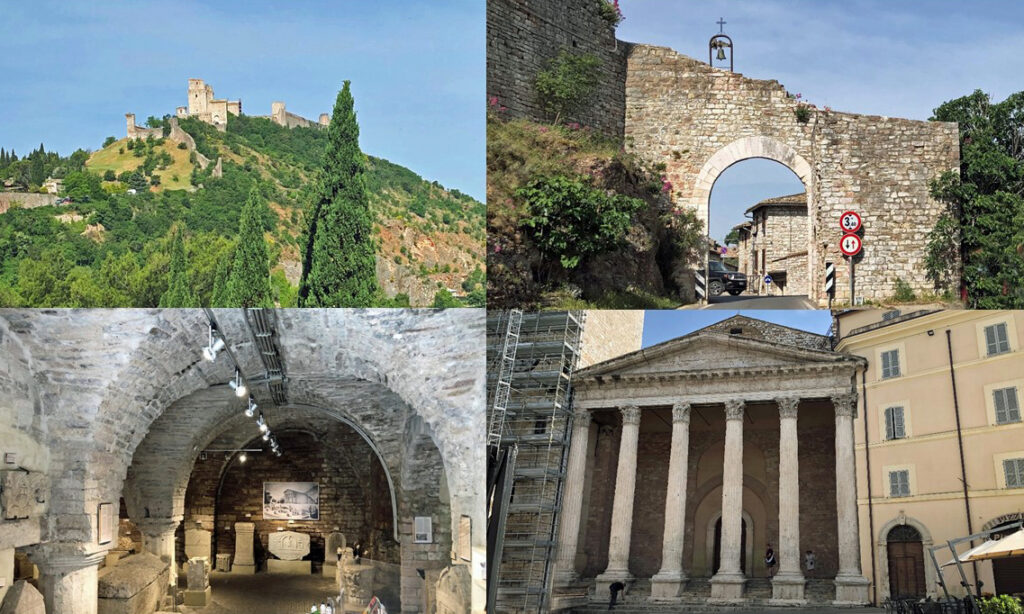This is the first of two visits to Assisi, a historic town in Italy’s Umbria region, located about 100 miles north of Rome.
Beginning in about 1000 B.C., the area around Assisi was settled by Umbrians, who built fortified settlements in the mountains. In 295 B.C., Romans took control of the area and built the city of Asisium on terraces at the foot of Mount Subasio about 1300 feet above sea level. The sophisticated walled city included a forum, an amphitheater, and a large temple honoring Minerva (or perhaps Hercules). Sextus Propertius, a Latin poet, was born in Asisium in about 45 B.C. After the collapse of the Western Roman Empire, Asisium became an independent commune. During the Middle Ages, Rocca Maggiore, an imposing imperial fortress, was built above the city. In the sixteenth century, with the city under papal control, the church of Santa Maria sopra Minerv incorporated the colonnaded facade of the Temple of Minerva. Assisi became part of the Italian Kingdom in 1860. In 1997, Assisi was hit by two earthquakes, damaging or destroying many of its buildings.
Today, Assisi, with a population of about 28,000, has largely recovered from the earthquakes and is among the most pleasant and interesting towns in Italy, with winding streets, moderate temperatures and magnificent mountain views. Remains of Roman roads and gates are visible and an archaeological museum beneath Piazza del Comune, the town square, displays items from the ancient Roman Forum. However, what makes Assisi a destination for thousands each year is not its Roman heritage, but because St. Francis, who founded the Franciscans, was born there in about 1181. The churches in Assisi associated with Francis, collectively designated a UNESCO World Heritage Site, include the seventh largest church in the world. Next week, we will visit those churches and learn more about St. Francis.
